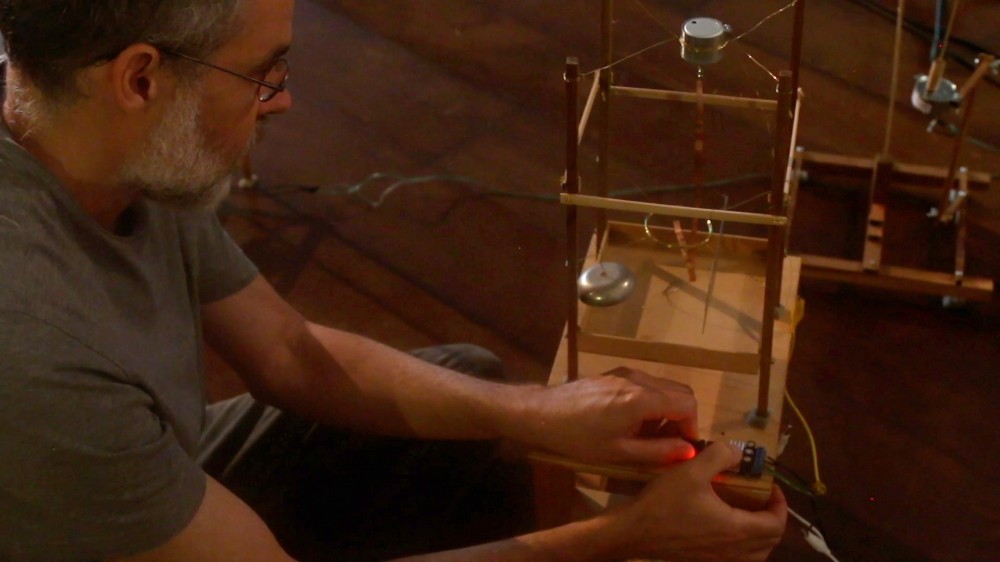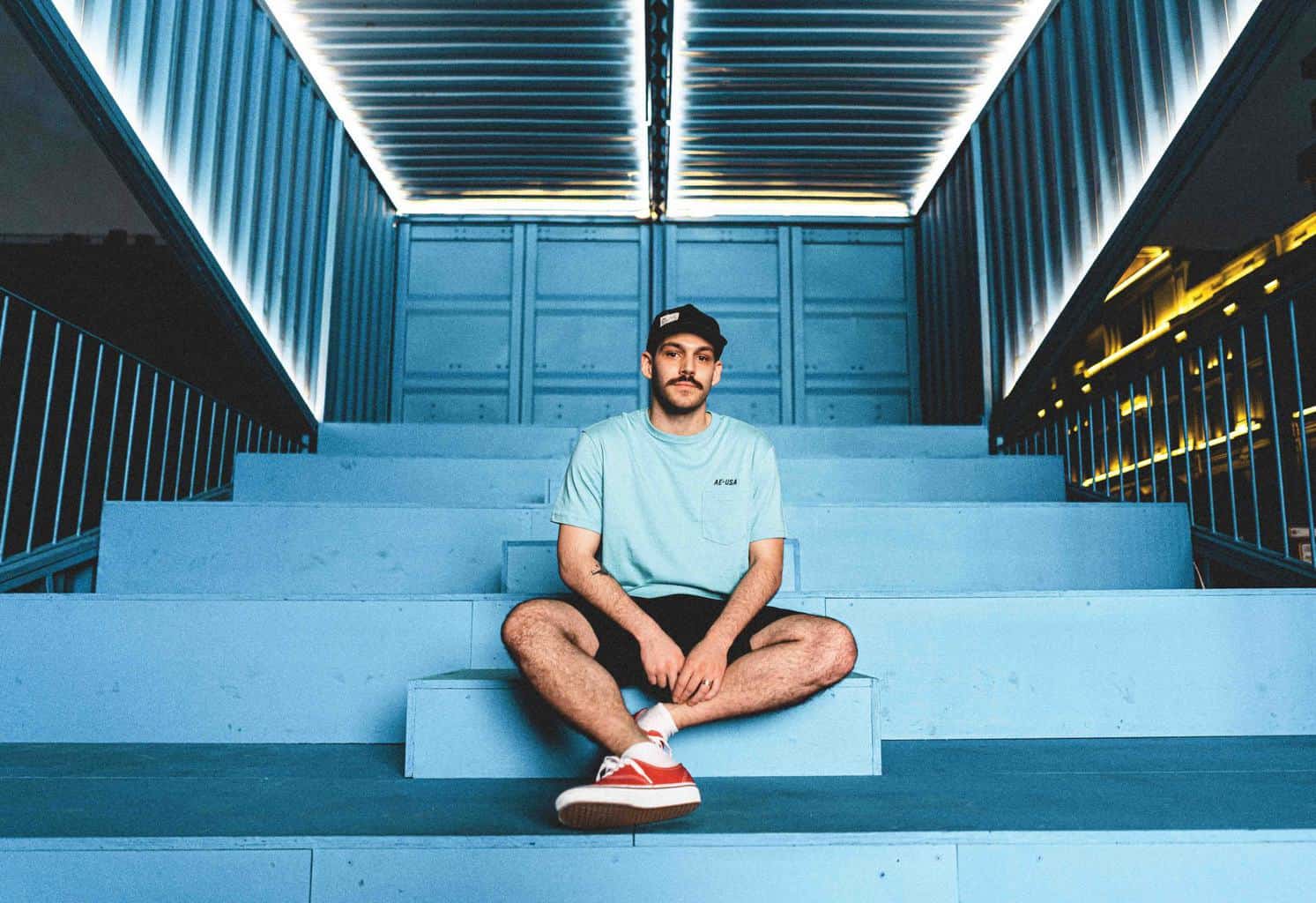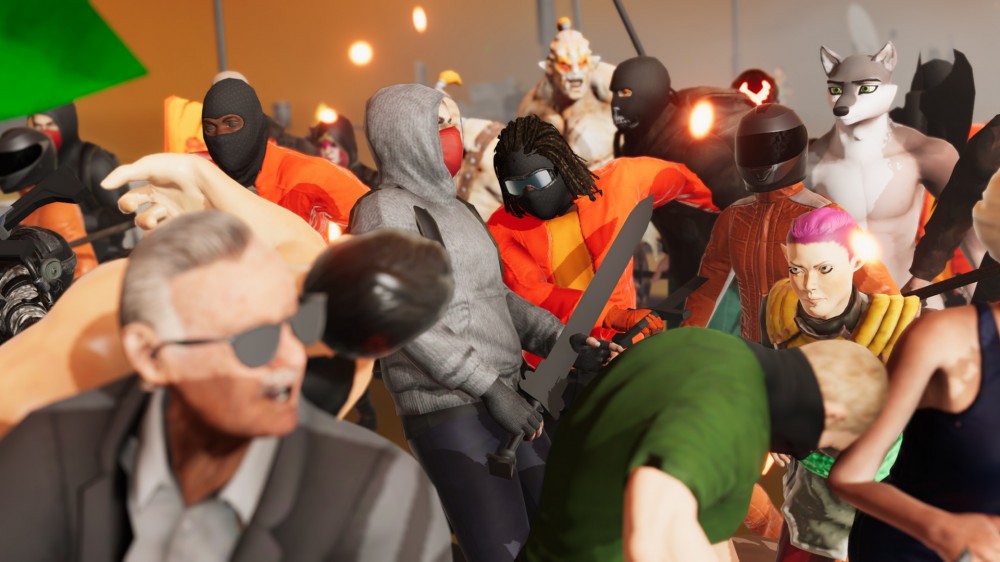
Theo Triantafyllidis Presents: Radicalization Pipeline
Using surreal humour and an absurdist aesthetic sensibility inspired by high fantasy, classic science fiction, MMORPGs and niche online communities, Theo Triantafyllidis builds immersive worlds that pry at the wider capabilities and broader ethics of the technology used in their creation.
Theo Triantafyllidis was making art in the metaverse years before Mark Zuckerberg changed the name of his company with the promise of a new, immersive, “embodied internet.” Before Meta had revealed its vision of a virtual world with the expansiveness and interactivity of Ready Player One and the expensively rendered digital architecture of a particularly luxurious WeWork, Triantafyllidis was spending months in his virtual art studio, building digital sculptures in virtual reality. During this time the only discernible difference between his virtual and IRL practice was that, for this project, the artist assumed the role of a muscular ork, an avatar he has used across a series of works probing the limits of what a virtual art practice might look like. Even before he had made the transition from architect to artist, Triantafyllidis was acutely aware of how physical public spaces were fast becoming a thing of the past. “I felt like making traditional buildings was somehow irrelevant to my thinking, because the spaces we are cohabitating are becoming increasingly online”, he explains. “I was very drawn to becoming more of an architect of the metaverse and trying to think what that means for the architectural profession: how do you translate this very old history and tradition of making buildings into this new medium? How can this knowledge be transferred? How can we make online community spaces that are interesting in the way that they’re structured and the way that they can enable new kinds of interactions?”
Triantafyllidis graduated from architecture school in Athens just as the 2008 financial crisis was hitting its peak, throwing the global architecture and construction business into freefall. After relocating to Beijing he became involved with an active community of artists making work that foregrounded the internet as a medium, projects that took the legacy of Net Art and Post-Internet Art and refocused those references through an architectural lens, inspired, in part, by the monolithic skyscrapers and entertainment malls that Triantafyllidis was working on at the time. It was at UCLA, where he enrolled to complete his Master’s degree, that the then architect was introduced to the game engine softwares that would open up a completely new way of conceiving of space and become instrumental in his art practice. In the years since Triantafyllidis has developed a highly technical, uniquely acerbic and deeply multidisciplinary approach to making work, using interactive experiences, mixed-media installations, extended reality and live stream performances, as well as live simulations to build immersive worlds that pry at the wider capabilities and broader ethics of the technology used in their creation.
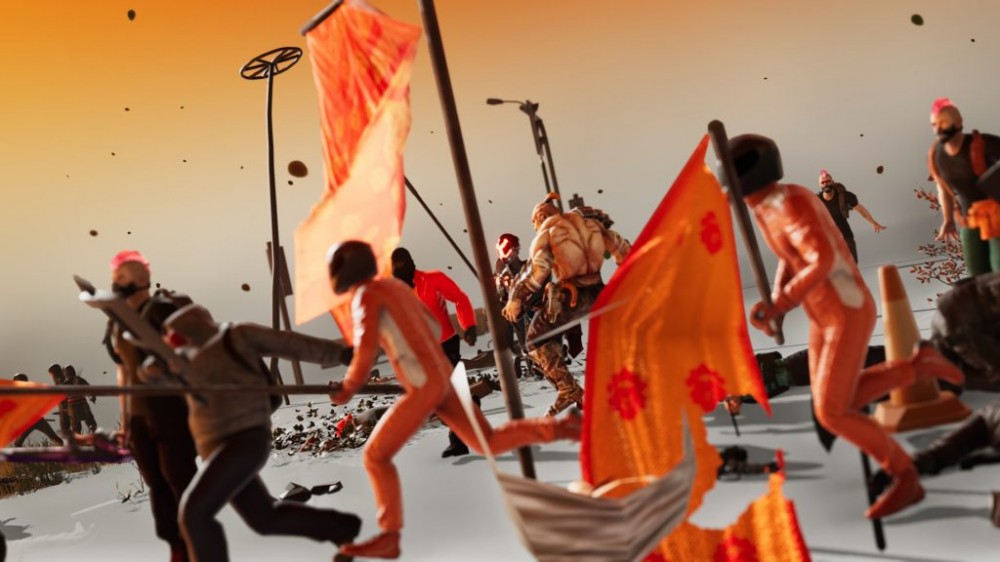

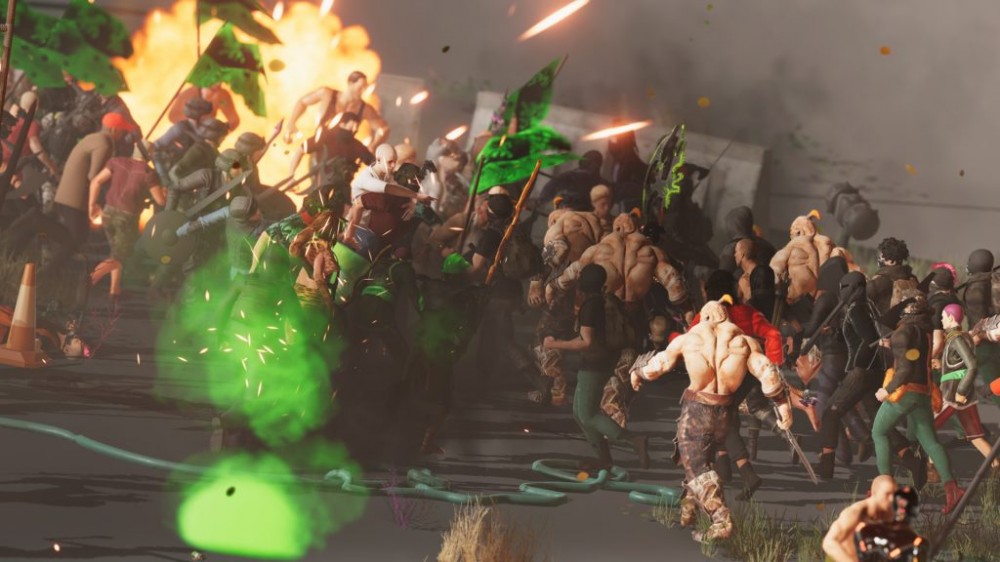
Using surreal humour and an absurdist aesthetic sensibility inspired by high fantasy, classic science fiction, MMORPGs and niche online communities, Triantafyllidis carries out a sustained critique of the tech industry and the wrestling of new technologies away from the benefit of the user and user-generated communities in the interests of corporate expansion, financial growth and the commodification of information. The way he achieves this can be understood in the interplay between two central aspects of his art practice, computational humour and AI improvisation. “I like computational humor as a concept because it is a very niche research objective within computer science that’s analyzing how the human brain responds to humor,” he says, “trying to create a mathematical formula for what is funny. In my work I generally like to have a humorous aspect because I think it’s something that has the capacity to break the audience’s defenses and be a first line of approachability in the work.” This comedic drive can be traced all the way back to one of his earliest simulation works, How To Everything, in which the artist attempted to create an algorithm that could, in theory, generate an infinite number of visually funny scenarios. In a gesture that bears contemporary resonance with the conspicuous barbecue sauce bottle placed in the background of Mark Zuckerberg’s Meta keynote, these scenarios throw together precarious physics and random objects within different environments with what the artist describes as “empathy, effort and failure.”
Triantafyllidis’s work with live simulations comes to its most complete expression with Radicalization Pipeline, a RPG-inspired battle royale which renders online social platforms as literal zones of conflict whilst demonstrating the artist’s improvisational approach to A.I. “I feel the most interesting aspect of these live simulation works is the connection to theater and live performance, how you have these very simplistic AIs, that are usually used in games for enemies or player interactions, that can be directed in the same way a theater director would direct actors,” he explains. “By giving them simple instructions you can create a performance score that is producing an infinite variation of some specific situations and you are able to produce humorous results out of that.” Across a flat expanse of concrete, Triantafyllidis whips between different perspectives, flitting between a top down, god’s eye view reminiscent of table top strategy games and the shaky, NPC-locked perspective of a first-person action game. Under a sky burning orange, MAGA cap wearers brandishing claw hammers fight alongside hulking orks dragging battle clubs and flails. Special Ops teams in riot gear wield sci-fi swords and shields, sprinting into the fray while dodging Antifa super soldiers and independent militia members holding fascist presenting flags high above their heads. Furries batter Proud Boys, cyberpunk elves band together with crypto anarchists, each with their own intricately rendered weapons and armour.
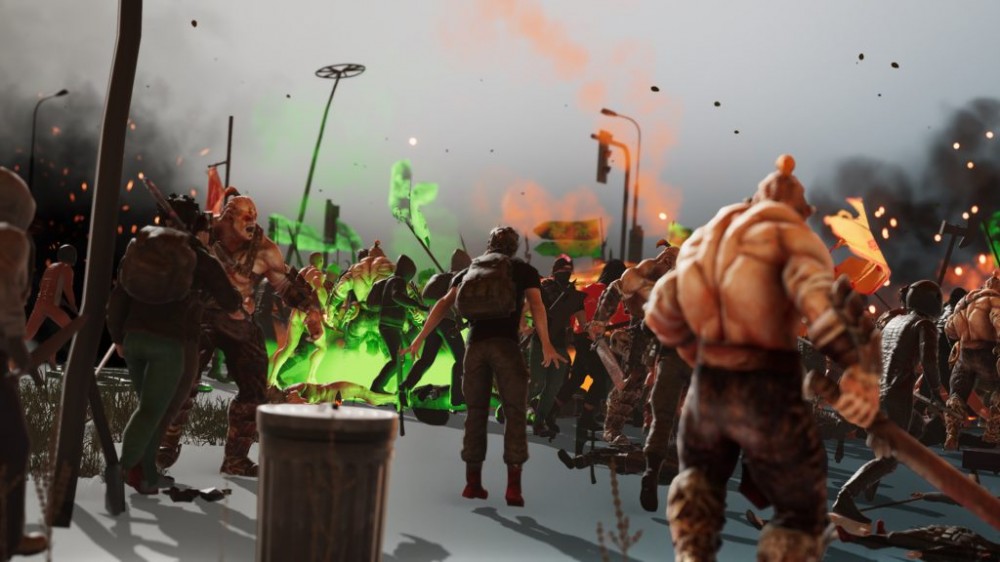
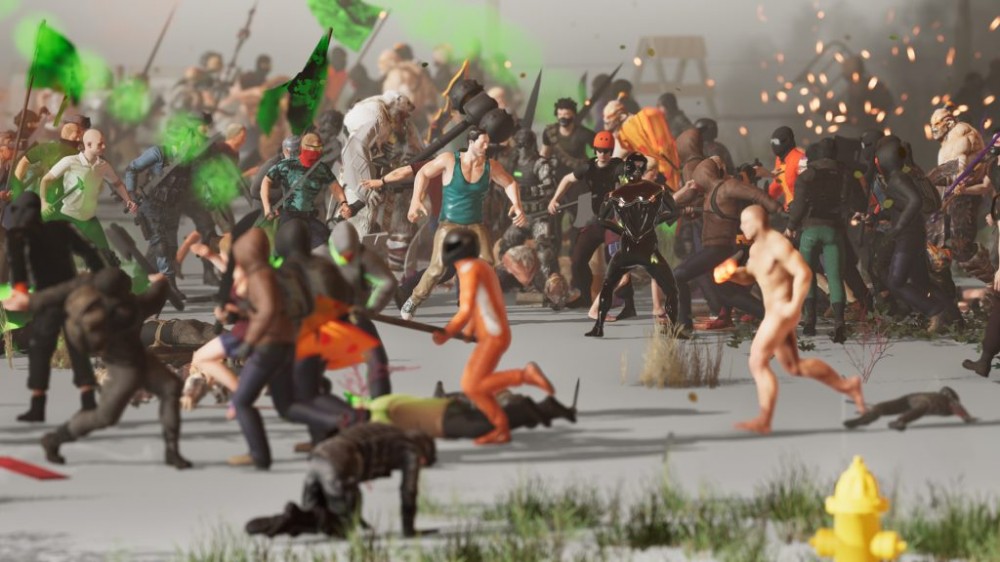

“With Radicalization Pipeline a few of my ideas about live simulation have started to crystallize,” says Triantafyllidis. “It’s more transparent to people that this is happening right now, it’s easier to point out that all these characters are in there and are, frame by frame, second by second, making small decisions on what to do based on who is around them, where they are right now, the friends and foes that surround them.” Programming each type of character with differing stats cribbed from RPG systems, such as health points, speed and strength, the artist adapts the concept of ‘boids,’ a classic artificial life simulation model within computer science created in 1986 by Craig Reynolds, to create infinitely repeating iterations of hostile crowd dynamics, where friends will join together to defeat foes and search for weaker enemies. As each of the characters is killed, they fall through the floor, only to be resurrected moments later to rejoin the battle. “For me, live simulations and the infinity that they can produce is closely related to the myth of Sisyphus,” continues Triantafyllidis, “how all these characters are really trapped inside the simulation and have to repeat these actions over and over.” The futile skirmishes that make up Radicalization Pipeline serve as a hilarious and poetic response to the synthetic approximations of person to person proximity that social media platforms take as their ground zero. “This idea of proximity is quite paradoxical,” notes Triantafyllidis.
“The internet is all about dispersing and cutting down on distance between people, but I think that our brains are somehow hardwired and excited by this idea of proximity and being able to represent that in virtual spaces has been around in video games and online multiplayer worlds for forever.” Without some careful curation of each group’s behaviours and allegiances, Triantafyllidis admits that early versions of the simulation resulted in even more chaos, with all the characters piling into a huge sphere of death. This is where the artist’s conception of programmer-as-dramaturge is manifested most clearly, as he describes: “the thing I spent most time on developing this work was fine tuning all these values and the range of these values so that the overall choreography of the crowd would always feel dynamic and evolving in some way.” The practice of crowd curation within the virtual space of Radicalization Pipeline is resonant with Triantafyllidis’s wider thoughts of how the virtual spaces of social media platforms, as well as their respective radicalization pipelines, function less as spaces for communication and connectivity and more as enclosed sites of conflict. “Now we have come to a point where everything is so walled in by social media platforms. There’s still the excitement of discovering new accounts, or new people, but I personally find that this feeling of excitement, of browsing through an expanding field, has now become a feeling of anger and dopamine hunting through the linear feed situation.”
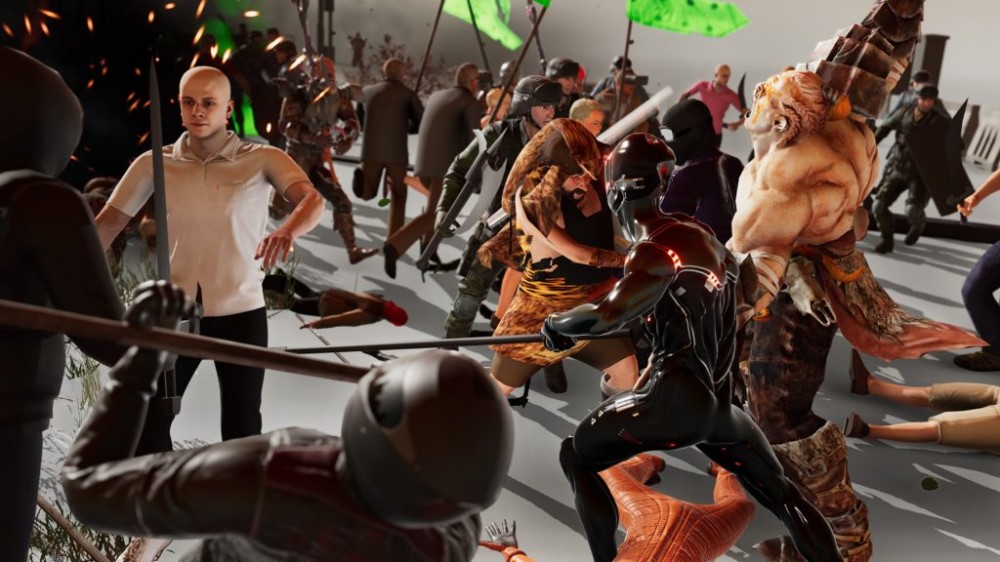
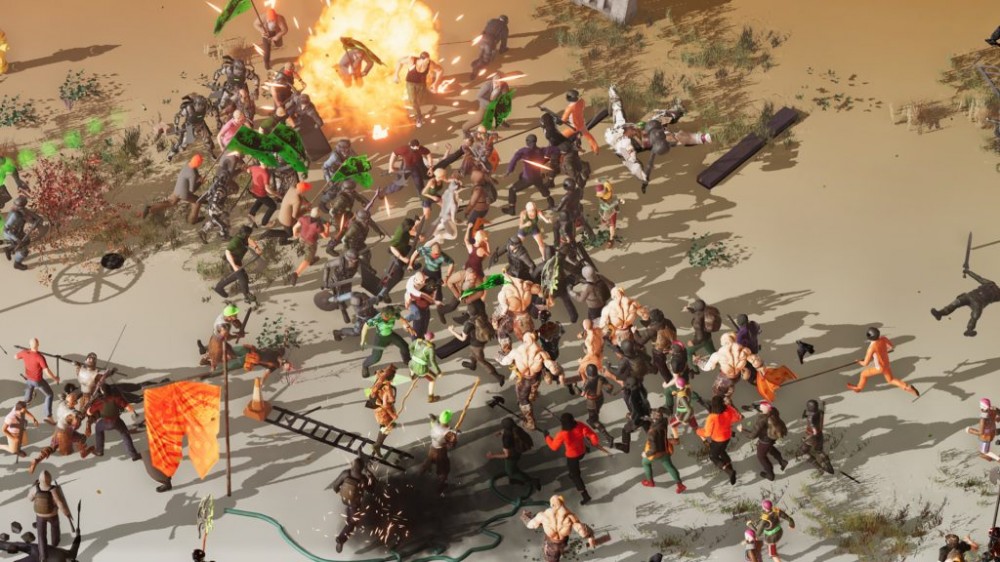
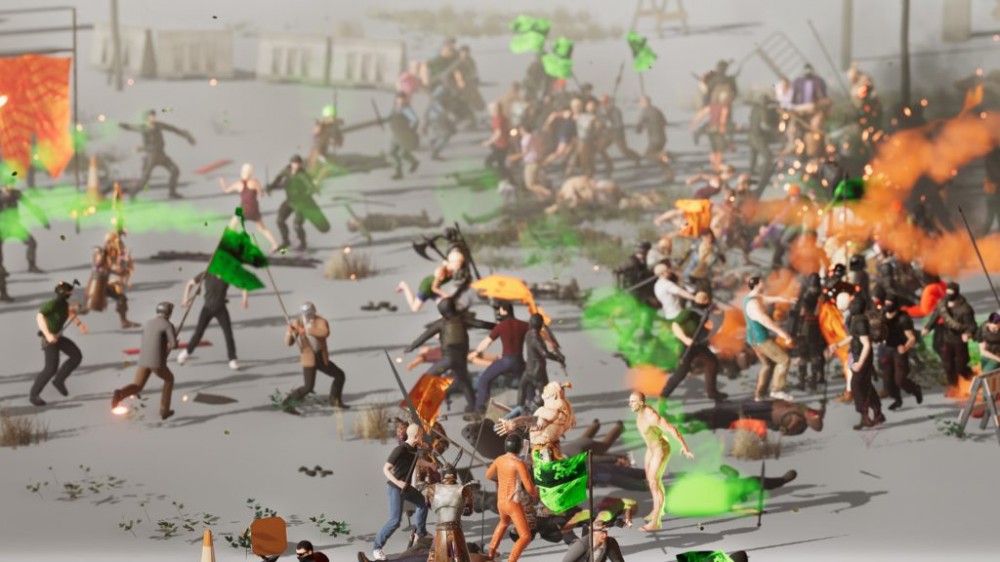
“The incentive to discover new things has now been offloaded to the algorithm, where we are now being told to let the algorithm tell you what you like and what you want to explore and give you the new things you want to see. It even feels like random encounters are not really random anymore, it’s always within the bubble you are presented.” Radicalization Pipeline is one such bubble, where encounters are random, yet dictated by highly focused algorithms to guide behaviour and movement. Yet within the concept of boids, a decades-old precursor to the kinds of live simulations that Triantafyllidis works on, the artist finds the potential for a more community-oriented model for the ways in which we will exist online in the very near future, within and without Zuckerberg’s Metaverse. “I am personally interested in the spatial quality of communication in a more 3D-based Web3,” he says, “where instead of hearing all the voices together from the entirety of the internet, you need to be physically close to a group that is online to listen to their voice and exchange information. These smaller groups are perhaps more meaningful, as they can incentivize chat and friendly interactions.” Far from the sisyphean hellscape of Radicalization Pipeline, free from the walled gardens of social media platforms, for Triantafyllidis, Web3 offers the potential for staying clear of the pipeline, granting us a space where it is possible to lean in close to listen.
For more information about Theo Triantafyllidis and his work you can follow him on Instagram and visit his website. Radicalization Pipeline is currently on show at Among the Machines, a group show at the Zabludowicz Collection.
Radicalization Pipeline Credits:
Live Simulation – Theo Triantafyllidis
Sound Design – Diego Navarro


